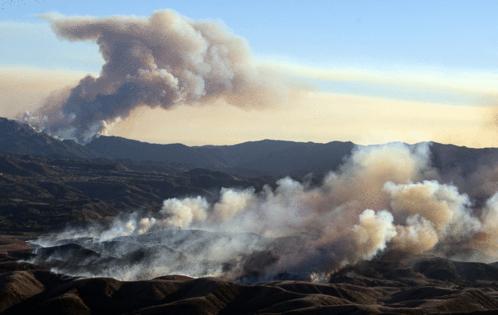Commentary: What wildfires do to our bodies when the smoke settles
Published in Health & Fitness
In fall 2020, I woke up in an apocalypse. It was 8 a.m., but the world outside was dark and blanketed by an angry red sky. With all the lights on in the house, we watched specks of smoke and debris float down outside from a nearby wildfire in Northern California. I will never forget driving down the freeway to the grocery store, watching a fire blaze through the hills beside me.
In Chicago and the Midwest, we pride ourselves on our cocoon from climate change’s most dangerous disasters. However, we still face the consequences of Canada’s wildfires to our air quality, and a recent report noted that some parts of Iowa now have up to a 92nd percentile risk of wildfires — on a par with the risk California and Colorado face.
Why are wildfires more dangerous now than they were before? Once these fires consume our concrete jungles, their smoke includes particulate matter from our cities. Inhaling particles from a vaporized car is far more dangerous than what comes from a burnt leaf, a phenomenon aptly named an “urban firestorm.”
Wildfires, increasing pollen counts, a thickening ozone layer and frequent heat waves are only a few examples of climate change’s direct impact on people’s health. As a medical student, I have begun to hear about and see the health impacts of climate disasters, from older adults with worsening heart failure after inhaling wildfire smoke to kids growing up in neighborhoods disproportionately affected by air pollution who are hospitalized with one asthma exacerbation after another.
Beyond worsening asthma and heart failure, the U.S. Environmental Protection Agency reports that the short-term effects of wildfire smoke include bronchitis, reduced lung function, and increased heart attacks and strokes. Few research studies have investigated the long-term impact of wildfires on health, but anecdotally and in studies so far, physicians have noticed increased asthma and diagnoses of chronic obstructive pulmonary disease, autoimmune diseases and even dementia. A study in Italy showed that long-term exposure to air pollution may lead to higher rates of many autoimmune diseases, including inflammatory bowel disease, rheumatoid arthritis and connective tissue diseases.
Emergency department visits due to heat-related illness have also been on the rise, according to a Centers for Disease Control and Prevention study, and the ones most affected are vulnerable groups such as children, pregnant people, older adults and those in areas with more power outages and less reliable air conditioning. I have seen patients in the emergency department after they have fainted and fallen because of extreme heat exposure. Recently published studies about people affected by the Maui and Los Angeles fires showed that beyond affecting heart and lung function and interrupting access to medical care, these climate disasters have led to higher rates of depression and even suicide.
Some may claim there isn’t much we can do to mitigate the damage of climate disasters such as wildfires or even that it’s too late. Indeed, with the big beautiful bill cutting air pollution monitoring measures and clean energy incentives for corporations, environmental protection feels like an unattainable dream. Increased fossil fuel emissions will lead to a drier, hotter climate and wildfire season will continue to expand. But now that we have the evidence to show the disastrous impacts of wildfires on our heart, lungs, mind and the rest of our body, let this be the final straw.
The House recently passed a bipartisan bill called the Fix Our Forests Act that supposedly directs funding to forest restoration and wildfire prevention and mitigation. However, climate activists have decried the bill for its support of increased logging activity and for bypassing the role of the National Environmental Policy Act in evaluating management projects, with the bill effectively increasing wildfire risk.
Instead, the Community Protection and Wildfire Resilience Act, which was introduced to the House in January and funds existing and new wildfire resilience programs, is better for the change we need. This bill adds to the Community Wildfire Defense Grant program to make homes fire-resistant on top of existing funding for “reducing hazardous fuels and restoring fire-adapted ecosystems.” Not only will the bill hold these programs accountable, but it is also a reminder that we have climate and wildfire regulations in place that the administration needs to adhere to.
As we enter wildfire season once again, we need to tighten, rather than loosen, climate policies to protect our planet and our own health. Before we write off the Maui, L.A. and Colorado fires as yet another inevitable natural disaster, let’s turn our attention to stopping them. As we’ve seen with our air quality after the Canada fires, the disaster doesn’t end with homes burning down. When the smoke settles (quite literally) and people return, their bodies suffer the consequences, and our hospitals have the evidence.
____
Lahari Vuppaladhadiam is a medical student at the University of Chicago Pritzker School of Medicine. She also worked with the Asthma and Allergy Foundation of America as an intern.
___
©2025 Chicago Tribune. Visit at chicagotribune.com. Distributed by Tribune Content Agency, LLC.










Comments